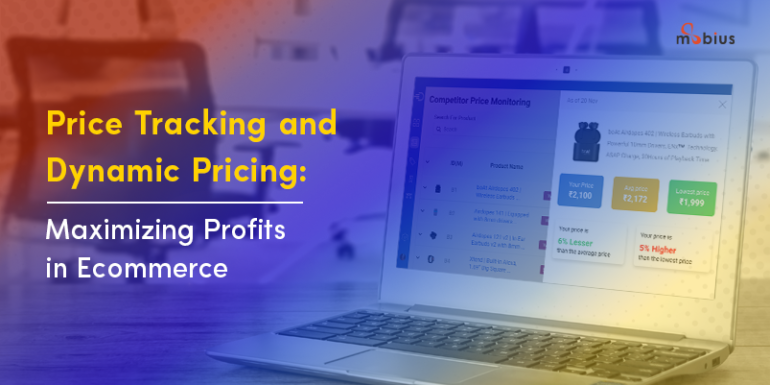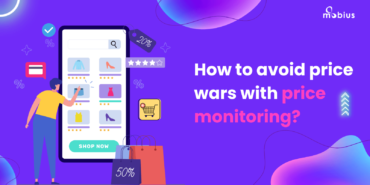Ecommerce businesses constantly look for ways to maximize their sales and profits. The search for the right processes, technologies, and strategies is never-ending as the industry grows more competitive. While these factors are important and aid in increasing revenue, effective ecommerce pricing strategies can definitely help accelerate revenue growth.
Setting the right prices for products or services is not merely a matter of randomly assigning numbers but a strategic decision that impacts a business’s revenue, competitiveness, and customer perception. Here, an ecommerce pricing strategy helps companies to balance profitability and market demand, enabling them to attract customers, outperform competitors, and maximize their bottom line.
Pricing is one of the topmost purchasing factors for shoppers and greatly influences their decision-making. So, the price of your product should be lower than what your competitors offer to attract customers while being profitable for your business. But where do you draw the line between being competitive and cost-conscious?
Many ecommerce businesses realize the value of price tracking and its direct influence on their sales. Price tracking is extremely useful for creating the right pricing strategy. Without carefully analyzing factors such as costs, market dynamics, and customer preferences, businesses may be unable to navigate the ever-evolving marketplace and achieve sustainable success.
Ecommerce price tracking and its significance
Ecommerce price tracking refers to the process of continuously monitoring and analyzing the prices of products or services offered in the online marketplace. It involves tracking and collecting data on competitor prices, market trends, and pricing fluctuations to gain valuable insights and drive strategic decision-making.
Businesses can monitor price changes in real-time, identify pricing patterns, and make quick pricing decisions by employing price tracking. Here are some of the benefits of price tracking for ecommerce businesses:
1. Competitive analysis
By tracking the prices of similar or identical products offered by competitors, businesses can gain insights into the market dynamics and pricing trends and adjust their ecommerce pricing strategies accordingly.
2. Price optimization
With price tracking, ecommerce businesses can understand the effects of different pricing strategies on profitability and revenue. They can experiment with different price points, discounts, or promotions and evaluate how these changes affect customer behavior and revenue.
3. Dynamic pricing
Price tracking enables businesses to implement dynamic pricing for adjusting prices in real-time. Businesses can monitor competitors’ price changes, track customer response to pricing fluctuations, and dynamically adjust their prices.
4. Price transparency
Today’s tech-savvy shoppers can easily compare prices across multiple online retailers to find the best product deals. Price tracking allows businesses to set competitive prices aligned with customer expectations.
5. Identifying pricing errors or inconsistencies
Price tracking helps businesses identify pricing errors or inconsistencies in their product listings. It ensures that products are priced correctly and helps prevent potential revenue loss due to underpricing or customer dissatisfaction caused by overpricing.
6. Strategic decision-making
Overall, price tracking provides valuable data for strategic decision-making. Historical pricing data can help make informed decisions about inventory management, product positioning, promotional campaigns, and market entry or expansions.
To summarize, price tracking is useful for ecommerce businesses to stay competitive, optimize pricing strategies, adapt to dynamically changing market conditions, and make data-driven decisions. We will now explore dynamic pricing and why ecommerce businesses should consider deploying it to multiply profits.
What is dynamic pricing?
Dynamic pricing, or demand-based pricing, is a pricing strategy that involves making price changes for products in real time. It considers factors such as demand, supply, competition, customer behavior, or market conditions.
Unlike fixed pricing, which remains constant over time, dynamic pricing allows ecommerce businesses to set prices that fluctuate dynamically to optimize revenue and maximize profits.
Dynamic pricing finds the optimal price point that balances supply and demand. For example, ecommerce sellers can increase the price of woolen products ahead of the winter season as the demand for them is bound to increase. Conversely, the prices of these products can be lowered during summer to stimulate demand and avoid losses.
How does dynamic pricing work?
Dynamic pricing is commonly being used in the ecommerce industry to optimize pricing in real-time for making the most out of market opportunities. It allows businesses to gain a substantial competitive advantage by creating additional sales opportunities during peak and slow demand periods.
However, it’s important to implement dynamic ecommerce pricing strategies carefully, as customers can perceive them negatively if not executed properly. Transparency, fairness, and customer trust should be maintained to avoid alienating customers or creating price discrimination concerns.
Dynamic pricing enables businesses to dynamically pivot their pricing strategies to optimize revenue, respond to market fluctuations, and capitalize on demand patterns.
Factors to consider before you implement dynamic pricing
No doubt dynamic pricing can do wonders for your ecommerce business, but it is not a decision to be made blindly. It is crucial that you weigh the impact of these price changes on your customers and overall business before implementing dynamic pricing.
1. Customer Privacy
Price tracking involves collecting and analyzing consumer data such as browsing patterns, pricing preferences, and purchase history. Therefore, businesses must handle this data securely and transparently by following the best data collection and usage practices and complying with data protection laws.
2. Price Discrimination
As price trackers help ecommerce businesses identify customer segments to adjust the prices accordingly, it creates the risk of unfair pricing. For example, individuals or groups can be charged more based on the factors like their location, demographics, or order history. Such discriminatory practices must be avoided for fair and transparent pricing decisions.
3. Competitive Practices
Competitor price monitoring is crucial for ecommerce businesses for accurate market analysis. However, businesses must avoid engaging in unethical practices like price-fixing agreements, predatory pricing, or any anti-competitive behavior that hinders fair competition. Instead, businesses should promote fair and healthy competition by complying with industry laws.
4. Excessive Pricing
Times of crisis often lead to unfair price surges. This occurs when businesses exploit high demand by increasing prices to unfair levels. It can be seen as taking advantage of vulnerable customers, and businesses can receive public backlash.
It is strongly recommended that you follow responsible practices, be transparent about the data collected and used, maintain fair pricing, and adhere to competition laws. You must consider the broader social and ethical implications of the pricing decisions. This is crucial for maintaining trust with the customers and capitalizing on long-term relationships.
Implementing price tracking and dynamic pricing
Price tracking and dynamic pricing can be a powerful strategy for ecommerce businesses. Price tracking will help you identify optimal price points, respond to market fluctuations better, and increase ecommerce revenue. This involves collecting and analyzing relevant data on competitors, market trends, and customer behavior to guide pricing decisions.
However, dynamic pricing takes it a step further by helping you adjust your pricing in real-time in response to market changes. It is an agile approach that ecommerce businesses adopt to optimize pricing, capture additional revenue during peak periods, and stimulate demand during slower periods.
If you plan to implement price tracking and dynamic pricing for your business, try our ecommerce price monitoring services. We have the best ecommerce experts in the industry to understand your unique business challenges and offer the right mix of expertise and technologies. Contact us to maximize revenue with the right ecommerce pricing strategy.






